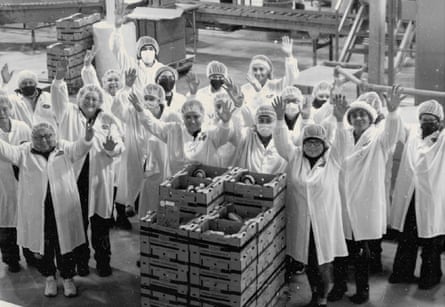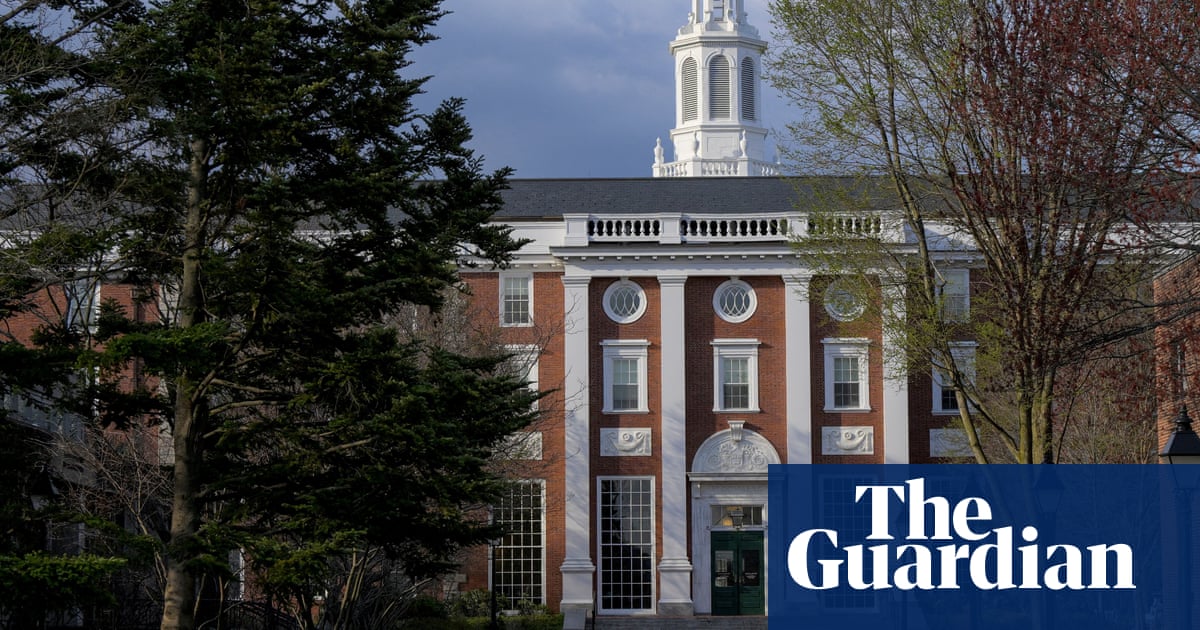Donald Trump may have won the votes of the US’s most farming-dependent counties by an average of 78% in the 2024 election. But the moves made by his administration in the past few months – imposing steep tariffs, immigration policies that target the migrant labor farmers rely on, and canceling a wide range of USDA programs – have left many farmers reeling.
“The policies of the Trump administration are wreaking havoc on family farmers. It’s been terrible,” said John Bartman, a row crop farmer in Illinois. Bartman is owed thousands of dollars for sustainable practices he implemented on his row crop operation as part of the USDA’s Climate-Smart program.
And he’s not the only one. Other farmers across the country are reporting that the Trump administration’s policies have destroyed their markets by ending programs that help farmers sell their produce to local schools and food banks; implementing draconian immigration policies that destabilize the farm labor pool; and generally creating volatility that makes it hard for farmers to plan ahead.
One group of farmers, the Northeast Organic Farming Association of New York, joined organizations like Earthjustice and the Natural Resources Defense Council in suing the USDA for removing department webpages focused on climate change, arguing that the move was unlawful and undermines farmers’ ability to adapt and respond to climate threats. (On 13 May, the coalition declared a kind of victory when the government committed to restore the purged content; the government is set to provide more information about the restoration process on 11 June.)
Some farmers, such as Bartman, loudly oppose Trump. “I’ve met some Democrats who’ll say: ‘You farmers deserve this. You voted for him.’ Well, I didn’t vote for the guy. The programs that have been impacted the most are targeted towards farmers that care about the environment.” Others, such as those living near North Carolina farmer Patrick Brown, are experiencing “buyer’s remorse”, said Brown, “but they don’t want to say it because they voted for the current administration”.
No matter who they voted for, farmers across the country are living in the new reality created by the Trump administration’s agricultural policies. The Guardian spoke to four farmers about what it’s like trying to grow crops, feed people, and keep their operations afloat in 2025.
‘If Uncle Sam will renege on a farmer, they’ll renege on anybody’
John Bartman, Bartman Farm
Marengo, Illinois

I am a vegetable and grain farmer; we’re mostly a row crop operation. My family has been farming in Illinois since 1846; we have the oldest continuous running vegetable stand in McHenry county. I farm 900 acres. I try to use the least amount of fertilizer and herbicides that I can.
Three main policies have been impacting us. Number one is the cancellation of USAID. That’s about a billion dollars worth of grain that the United States purchases from farmers like me, and they give it to third world nations who are hungry. To kill that program is a disaster. It’s morally bankrupt, and it hurts farmers’ bottom line.
Another thing that’s very pressing is the payment freezes to farmers from the USDA. I was involved in the Climate-Smart practices. We were paid to implement stewardship practices that the USDA has been preaching since the Dust Bowl. The added benefit is these practices combat climate change. That’s what the current administration doesn’t want anything to do with.
I’m supposed to be paid close to $100 an acre. Then the current administration came in and put a freeze on everything. $100 an acre may not sound like much, but there are some years where we’re happy if we make $20 an acre off of things. I have an operating loan that I haven’t been able to pay off because I was counting on this money. I have rent that’s due. I have seed costs. I have chemical costs.
I try to explain to people, if I were a repair person, and I went to my local grade school and fixed their furnace, and in the meantime, a new school board was elected, I still deserve to be paid. I’ve signed a contract with the USDA. The full faith and credit of the United States is at risk, because if Uncle Sam will renege on a farmer, they’ll renege on anybody.
The third one is the tariff situation. China is and has been our number one export for soybeans; 100% of the soybeans that I grow are exported. During Trump’s first administration, half of all the soybeans that China purchased were from the United States. By the end of his first administration, it was down to a quarter. Now Brazil has taken over our role as the number one importer of soybeans into China. From an environmental standpoint, that means more deforestation in the Amazon. Mexico purchases 40% of all the corn in the United States. And he wants to have a trade war with Mexico? Mexico can just as easily buy their grain from Argentina and Brazil.
The USDA has also canceled a lot of contracts for food pantries and school districts to purchase from local farmers, and that’s absolutely devastating. I was just in Springfield, Illinois, testifying and hearing testimony from other farmers. Many of them are first-generation farmers, and that program gave them an outlet for their produce. It’s so sad listening to them saying, ‘I finally had my dream of owning my own farm and making a living at it. Now I don’t know what I’m going to do, because my market has dried up.’
‘If we don’t have enough workers, we cannot harvest our crops’
Shah Kazemi, Monterey Mushrooms
Santa Cruz county, California

People don’t recognize that we either have to import our labor, or import our food.
We operate five farms right now: in California, Tennessee, Texas and Mexico. We have close to 2,000 employees. Our business has been totally dependent on migrant workers, just like all other ag businesses in this country. Without them, there is no food on anybody’s table.
In 1983 we acquired a farm in Loudon, Tennessee. At the time we didn’t have one migrant worker in that plant. By the early 1990s we had about 20% migrant workers, and by the early 2000s we had 85%, because nobody wants to do that kind of work any more in this country. When you’re bent over picking strawberries, cucumber, lettuce, zucchini, whatever the crop is – try to do that for eight hours. See how your back feels, how the rest of your body feels. Farming is hard, physical work.
These are skilled workers, harvesting at a certain rate to stay productive; you have to know your trade. A skilled mushroom picker can pick about 75 to 80 pounds an hour, and some of them exceed 100 pounds an hour. A new picker comes in, their productivity is in the 20s, and it will take six to eight months to get them up to 50. So if you had to replace a guy that’s picking 80 pounds an hour with people who are picking in the 20s, you need three or four of them. We have a lot of respect and admiration for these people. They’re really underappreciated.
I have a friend who is in the farming business. About a month ago, there was an Ice [Immigration and Customs Enforcement] raid in the area. The following day, most of his employees didn’t show up. Even the people who have been here for a long time, they’re listening to the news and hearing that people with green cards are being deported. The fear factor has been heightened significantly. That’s what has happened with the new administration coming in.
If we don’t have enough workers, we cannot harvest our crops. And if you don’t harvest, then it’s all wasted.
The uncertainty and erratic decision making creates volatility in the marketplace. And now we’re concerned about where we’re going to get future workers. What’s going to happen a year from now, as some of these people get deported, or they feel so fearful they go back to their home country? Who’s going to replace them?
We need to have a program that lets people come in who can do the work, and then at the end of whatever the term is, they can go back home. They have a guest worker program in Canada that works significantly better than what we have here.
Nobody pays any attention to the farmers, and we are the people who put food on the table every day. And the migrant workers, those are the hands that pick the crops that you eat.
‘The short-term impact is more anxiety, fewer investments on the farm’
Josh Sneddon, Fox at the Fork
Monee, Illinois

I got into farming because I love to cook. When I was in New Jersey and I was getting my food from local farmers, ranchers and fishermen, the quality of the food was so much better that my spice cabinet became essentially salt and pepper, because the food was good enough [on its own]. I took my entrepreneurial spirit and applied it to my interest in building a local food system driven by higher-quality foods, greater accessibility, and a climate smart focus on our food system.
Fox at the Fork is a 10-acre regenerative farm – we grow fruit and nut trees like pecans, persimmons and currants, while also stewarding approximately one acre of land intensively in annual vegetables.
It’s my fifth year in business. In prior farm bills and administrations, the USDA supported individuals like me who are considered “beginning farmers”. That’s one of their historically underserved categories. The USDA [formerly] created and reinforced programs that supported individuals who hadn’t had the same opportunities – Bipoc, LGBTQ+, beginning, veteran farmers – to have an equitable shot at growing and establishing small-scale food businesses in their communities.
Being considered a beginning farmer was part of the criteria that has helped me secure NRCS [Natural Resources Conservation Service] grants, one of them being a Conservation Stewardship Program contract. That’s a five-year contract that recognizes all of the conservation practices we implemented. For us, that’s about [protecting] native prairie; cover cropping; building bird boxes to bring back native kestrels and owls.
Almost all federal grants require that some of the money spent is yours and is not reimbursed. So farmers have a stake in the game; it’s not just the government giving out corn and soy subsidies.
The other program that really helped our farm last year [that has been canceled under the current administration] is the LFPA, the Local Food Purchase Assistance Cooperative Agreement Program. It was getting up to $25m [in Illinois] that had been obligated to the state for food distribution organizations like food banks, who provide food to the community and pay a fair market value to us farmers.
I also have a Reap contract – the Rural Energy for America Program – which is another program that faced direct cuts. At the end of last year, I spent approximately $79,000 to install solar, having already received approval and signed paperwork. That grant is a 25% reimbursement through the USDA reap, which is for me, $19,784. I’m still waiting for that. Not receiving that $19,784 has slowed what investments I’m going to make for the year.
It’s hard to predict the long-term impacts, but the short-term impact is more anxiety, fewer investments on the farm, and likely greater effort trying to get my food placed in the community at a fair market price.
‘When you sign a government contract, you feel some sense of, “this can’t be taken away”’
Patrick Brown, Brown Family Farms
Warren county, North Carolina

I’m a fourth-generation row crop farmer. My home farm is about 165 acres. I also grow industrial hemp fiber and produce – watermelons, leafy greens, tomatoes, sweet corn.
We’re an impoverished community, and we don’t have access to a lot of food, so I try to get healthy options to children especially. We were participants for the past two years in a USDA project – which has just gotten terminated – providing fresh food to local schools. We also created a non-profit to help create a path for young kids that want to become farmers. And I also am a director of a non-profit called Nature for Justice, and we were awarded a USDA Climate-Smart contract to help farmers with conservation practices.
All my projects that were funded by the federal government have been terminated during the current administration. It’s caused us to pivot. We’re so used to not having anything – as a minority farmer, that’s the way things have always been.
But when you sign a government contract, you feel some sense of, ‘this can’t be taken away.’ I was doing two projects: one for cover crops and nutrient management, and the other one to plant trees to help with erosion and chemical drift, and to create habitat for wildlife. We did all this work and invested all this money, all for them to say, as of 29 January, the project is no longer in place.
We were expecting to get over $65,000 this year from work we did in 2024. They claim that I will eventually get the money, but who knows how long that will be held up?
Plus, the announcements made during this administration through the secretary of agriculture are not getting down to the rural community offices that represent small farmers. It’s almost as if things are announced on social media, and then the offices hear about it. And our local NRCS offices and our Farm Service Agency offices are more understaffed than they’ve been in 20 years. The technical assistance is non-existent.
The main thing we need right now is for our local legislators to speak up for us. A lot of them are being quiet. But we need to advocate against the wrongdoing that is being done to farmers.

 7 hours ago
2
7 hours ago
2

















































